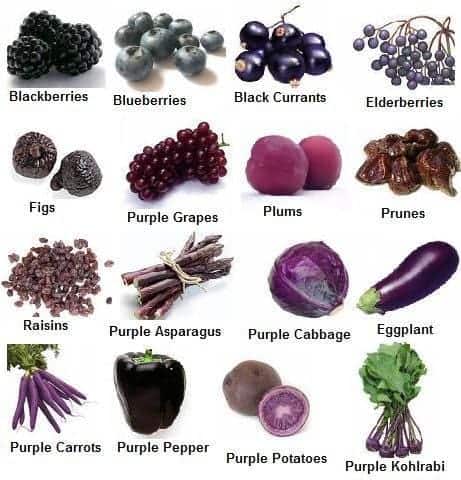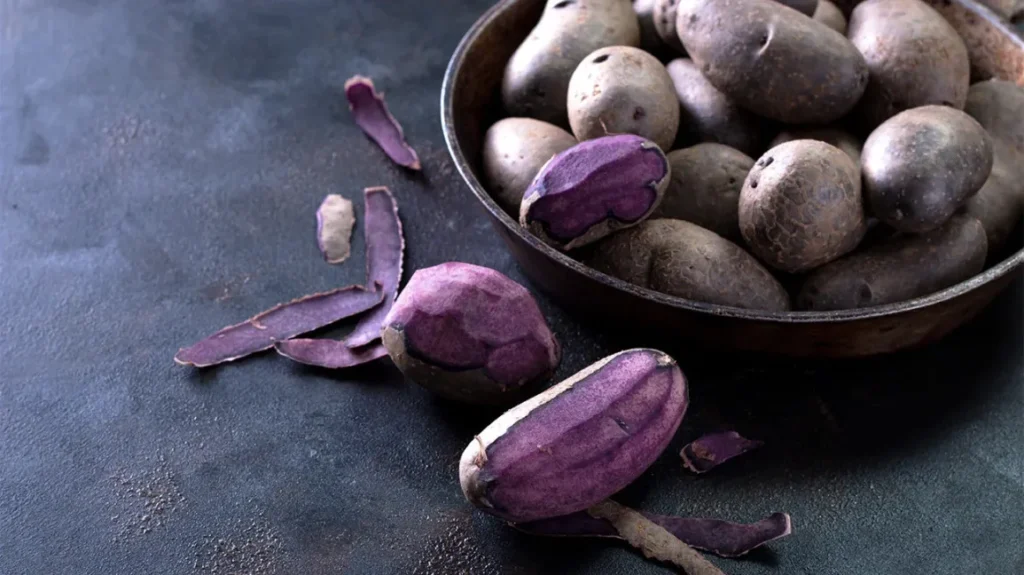Purple foods offer a wide range of health benefits due to their high concentration of beneficial nutrients and antioxidants.
Also Read 15 Landmarks To Visit Before You Turn 65
Here are some of the potential health benefits of eating purple foods:
- Reduced inflammation: Many purple foods contain anthocyanins, a type of antioxidant that has been shown to reduce inflammation in the body. Chronic inflammation is linked to many diseases, including heart disease, diabetes, and cancer.
- Improved heart health: Purple foods may help improve heart health by reducing inflammation and improving blood flow. The antioxidants in purple foods may also help reduce the risk of heart disease by protecting the heart against oxidative stress.
- Cancer prevention: Some studies suggest that the antioxidants in purple foods may help prevent cancer by protecting cells against DNA damage and reducing the growth of cancer cells.
- Improved brain function: Some research suggests that the antioxidants in purple foods may help improve cognitive function and reduce the risk of age-related cognitive decline.
- Better digestion: Many purple foods are high in fiber, which can help improve digestion and promote regularity.
- Improved eye health: Purple foods are often rich in nutrients like vitamin A and lutein, which are important for eye health and may help reduce the risk of age-related eye diseases like macular degeneration.
- Stronger immune system: Purple foods are often high in vitamin C and other immune-boosting nutrients, which can help strengthen the immune system and reduce the risk of infections.

Follow us on Youtube
Follow us on Facebook
Follow us on Twitter
Follow us on Instagram
Here are some examples of purple foods:
- Purple grapes: Purple grapes are a type of grape that have a dark purple color. They are often used to make wine, but can also be eaten fresh or used in cooking.
- Eggplant: Eggplant is a vegetable with a shiny, deep purple skin and a soft, spongy texture. It is commonly used in Mediterranean and Middle Eastern cuisine and can be grilled, roasted, fried, or used in stews and curries.
- Purple potatoes: Purple potatoes are a type of potato with a deep purple skin and flesh. They are high in antioxidants and can be boiled, roasted, mashed, or used in salads.
- Blackberries: Blackberries are a type of berry that have a deep purple-black color and a sweet-tart flavor. They are commonly used in desserts, jams, and smoothies.
- Plums: Plums are a type of fruit with a purple or reddish-purple skin and flesh. They are sweet and juicy and can be eaten fresh, used in desserts, or made into jams and preserves.
- Purple carrots: Purple carrots are a type of carrot with a dark purple skin and orange flesh. They are high in antioxidants and can be eaten raw or cooked.
- Red cabbage: Red cabbage is a type of cabbage with a deep purple color. It is often used in salads and coleslaw, and can also be braised or pickled.
- Purple cauliflower: Purple cauliflower is a variety of cauliflower with a deep purple color. It is high in antioxidants and can be roasted, grilled, or used in salads.
- Purple asparagus: Purple asparagus is a variety of asparagus with a deep purple color. It has a slightly sweeter taste than green asparagus and can be steamed, roasted, or grilled.
- Purple sweet potato: Purple sweet potato is a type of sweet potato with a deep purple skin and flesh. It is high in antioxidants and can be baked, roasted, mashed, or used in desserts.
- Purple kale: Purple kale is a variety of kale with a deep purple color. It is high in vitamins and minerals and can be eaten raw in salads or cooked in stir-fries and soups.
- Acai berries: Acai berries are small, purple berries native to Central and South America. They are high in antioxidants and are often used in smoothies, bowls, and other health food products.
- Elderberries: Elderberries are small, dark purple berries that grow on the elder tree. They are high in antioxidants and are commonly used to make jams, jellies, and syrups.
- Lavender: Lavender is a fragrant herb with purple flowers. It is often used in cooking and baking to add a floral flavor and aroma to dishes.
- Black currants: Black currants are small, round berries with a deep purple color. They are high in vitamin C and are often used to make jams, jellies, and syrups.
- Mulberries: Mulberries are small, sweet berries with a dark purple color. They are often used in desserts, jams, and smoothies.
- Purple figs: Purple figs are a type of fig with a deep purple skin and flesh. They are sweet and juicy and can be eaten fresh or used in desserts.
- Red onions (when cooked, they turn purple): Red onions are a type of onion with a purplish-red skin and white flesh. When cooked, they turn a deep purple color and are often used in soups, stews, and stir-fries.
- Radicchio: Radicchio is a type of leafy vegetable with a deep purple color and a slightly bitter taste. It is often used in salads and can also be grilled or roasted.
- Purple endive: Purple endive is a type of endive with a deep purple color and a slightly bitter taste. It is often used in salads and can also be grilled or roasted.


